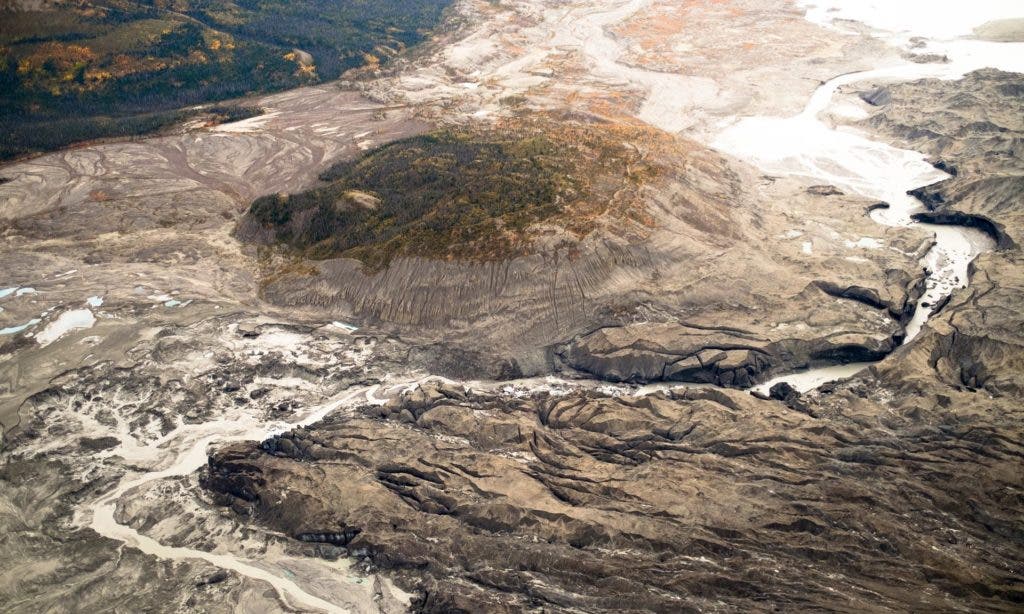Researchers have described the first case of ‘river piracy’ — a river disappearing after an intense glacial melt.

You know how some people think that melting glaciers don’t affect them? Well yeah about that… that’s complete rubbish. Global warming affects every single part of the world, and no area is invulnerable. As if to make that point even more clear, the retreat of the Kaskawulsh Glacier has completely dried out a big Canadian river, a disturbing and unexpected development which took researchers by surprise.
For hundreds of years, the Slims River flowed from the Kaskawulsh Glacier to the southward Kluane Lake. This wasn’t some kind of small stream — in some points, it spanned up to 150 meters at its widest points and had an overall wide and solid flow. But on a field trip in 2016, geologists made a stunning discovery: the river was just gone.
“We went to the area intending to continue our measurements in the Slims river, but found the riverbed more or less dry,” said James Best, a geologist at the University of Illinois. “The delta top that we’d been sailing over in a small boat was now a dust storm. In terms of landscape change it was incredibly dramatic.”
Because the area is so inaccessible, they didn’t realize what happened at first. Dan Shugar, a geoscientist at the University of Washington Tacoma and the paper’s lead author, added:
“The water was somewhat treacherous to approach, because you’re walking on these old river sediments that were really goopy and would suck you in. And day by day we could see the water level dropping.”
They decided to use a helicopter and some drones to see what was happening on the other side of the valley, where the river originates. What they learned was that the water from the glacier, which was supplying two rivers, was now supplying a single one — the south-flowing Alsek river. So Alsek was flowing stronger than ever, while Slims was reduced to a tiny stream. Most of this shift happened abruptly, over only a few days (from 26 to 29 May 2016, but the study was just published now). Prof Lonnie Thompson, a paleoclimatologist at Ohio State University who was not involved in the work says this is a clear example of how thresholds and breaking points can lead to huge changes in nature. Basically, small, incremental changes can lead to sudden, drastic environmental impacts.
This kind of river piracy has been studied before in the geological record, but never in our time. We’ve seen it happening (or rather, we’ve seen evidence of it happening) millions of years ago, but it’s the first time we truly see it with our own eyes. In geological time, this process happens instantaneously.


